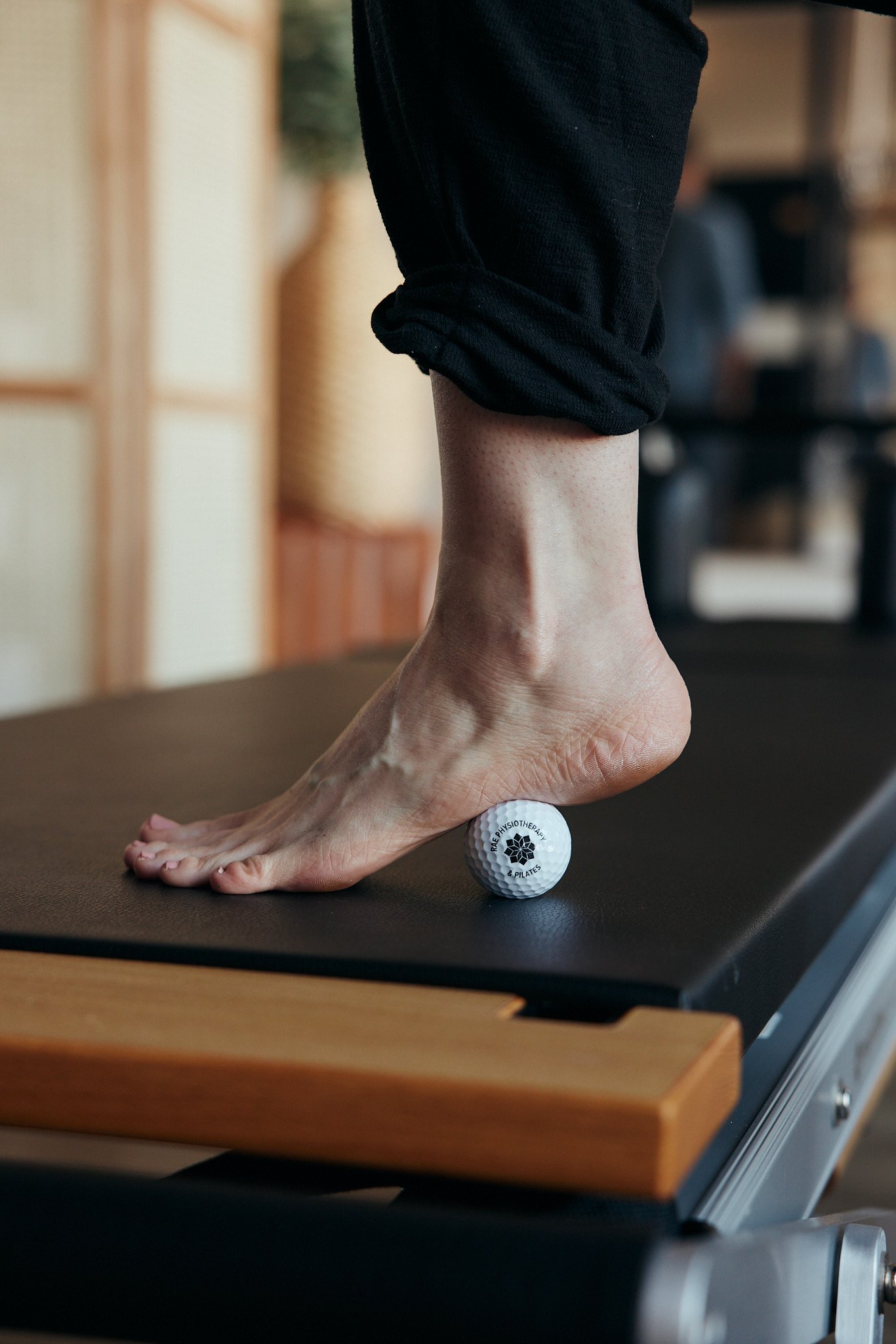Footwork Foundations
Our feet and their relationship with overall body health are often overlooked, yet this crucial base of support is vital for stability, load transfer, balance, and all functional movement. Let's explore why!
The Importance of Foot Health
Did you know that each foot contains 26 bones and 33 joints? That's a lot of opportunity for mobility and connection! However, given many of our common foot habits, there's also a significant chance for compression to develop. For instance, that old ankle twist from 15 years ago might be subtly changing your entire movement pattern over time. It might be surprising, but that nagging neck pain you've had for years could improve by optimizing your base of support and training yourself to have more awareness of your loading habits. Read on to learn more!
Despite their robust design, many of us experience foot-related issues because we've worn narrow, non-foot-shaped shoes from a young age and haven't focused on releasing or strengthening our feet in conjunction with whole-body movement. Our feet are often the last thing we think about, unless we twist an ankle or stub a toe! It's time to shift this perspective. Caring for your feet is a fundamental way of caring for your entire body.
Think about it: your feet are crucial for transferring forces throughout your body during everyday activities like walking, running, jumping, and pivoting. If your feet are stiff and immobile, these forces can't be absorbed properly and instead travel up your kinetic chain. This can lead to strain and potential injuries in your ankles, knees, hips, and even your back.
Footwear matters
A major cause of foot dysfunction stems from the shoes we wear. While there's often resistance to switching to more anatomically foot-shaped shoes, there are now many more options available, from dress shoes to hiking boots, that allow your feet to move more freely and build functional strength.
It's the consistent things we do most often that shape our patterns, and traditional footwear is anything but "foot-shaped." It might be surprising to learn that most commercially available shoes, even your favorite sneaker brand, aren't typically foot-shaped. They often lead to compression on both the little toe and big toe sides as they come to a point. This can gradually inhibit full ankle, knee, and hip function over time, potentially creating local issues like hammer toes, bunions, calluses, and joint stiffness, as well as problems throughout the entire kinetic chain.
When we wear shoes with thick soles, like those with two inches of foam, our natural grounding sensation diminishes. This disconnection affects our nervous system, as our feet are vital for sending information about balance and position to the brain. Many of us unknowingly wear shoes that, even when they are the right size (even a wide version), squeeze the toes together, have a forward-tilted heel, and offer very little sole flexibility, all of which limit the natural movement and expansion of the feet.
Foot health extends far beyond comfort. It also influences the balance of the pelvic floor, diaphragm, and thorax. When our muscles can lengthen and contract fully, we achieve a "felt sense" of engagement throughout our entire body. Unfortunately, modern life often forces us into breath-holding patterns or postures like tucking the tailbone under, restricting our movement options.
Start to free your feet!
For starters, pay attention to the things you do most often, like how you stand and sit. Notice if you tend to favor one side and what your "footprint" feels like. While short-term compensations are generally not an issue, reinforced patterns can lead to long-term consequences. Even if you don't feel pain now, such asymmetries might cause problems when you engage in more dynamic activities, like playing sports.
Ground your big toe joints (not the tip of your toe) and splay your toes, noticing any tensions that arise. Think about achieving "full foot contact" more of the time. Start to get curious about the foot positions you hold yourself in—do you tend to roll onto the outside of your feet for hours, for example?
Regular release work can awaken tight spots. Use a small ball underneath your foot, especially along the underside of the lateral portion (under the 3rd-5th toe length). About one minute of targeted release, holding each tight spot for about 10 seconds, can really help foot mobility. Go slowly; this can be very tender at first!
Toe separators can be really helpful to carry over the release work. Start with 30 minutes per day and build up from there.
Slowly start swapping out your footwear for more foot-shaped, flat, and flexible shoes. Go slowly with this; it takes time and consistency to build strength in your feet in conjunction with lessening the compression throughout them.
Some resources to get you started:
Brands to explore: LEMS, Shapen, VivoBarefoot, Belenka, Whitin, Splay.
Even cheap water shoes can suffice to get you started because most of them are "foot-shaped"! Avoid narrow, highly cushioned sports shoes for everyday wear—of course, some cushioning can be helpful at certain times, but it's what we do most often that matters.
Are your feet getting the attention they deserve? Start incorporating foot care into your routine and see the benefits throughout your whole body. Optimize your base of support, and that strong foundation will reap rewards for the rest of your body—it's all connected after all!

